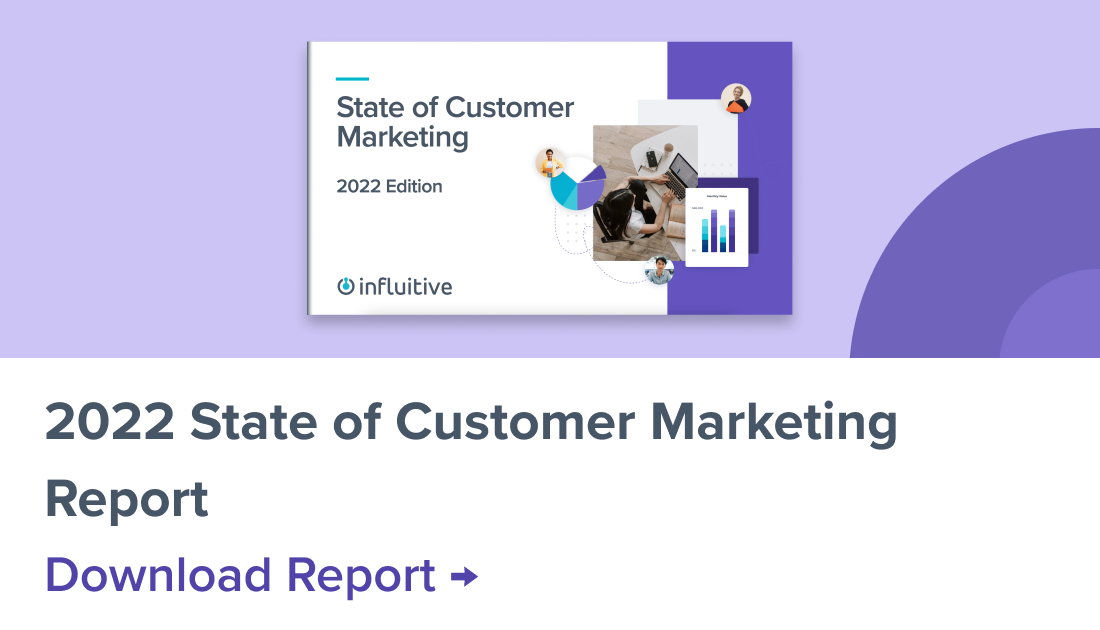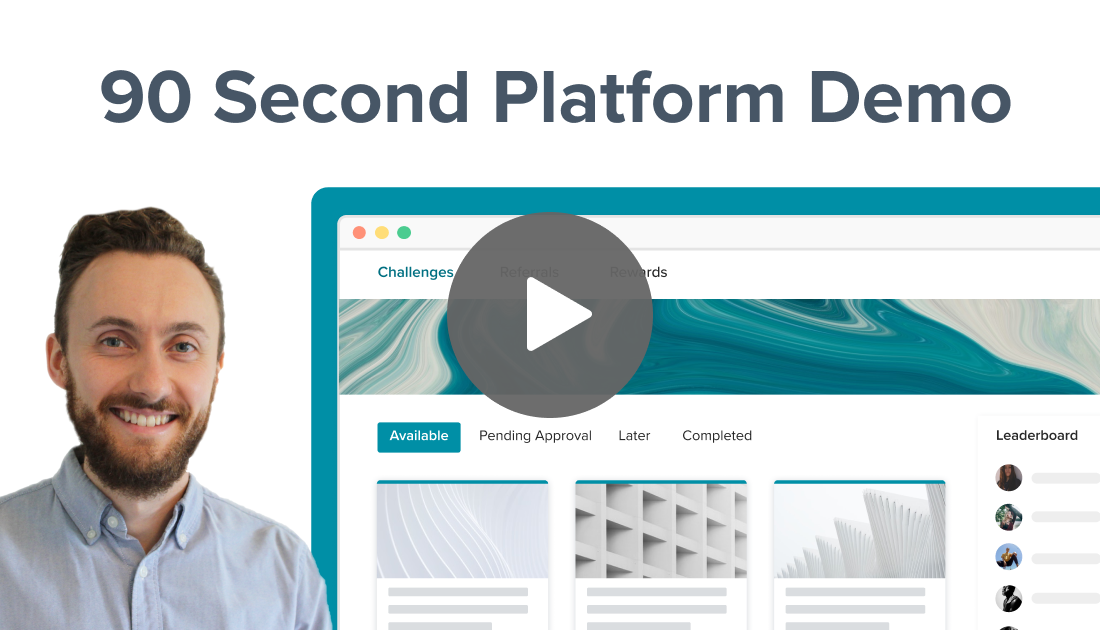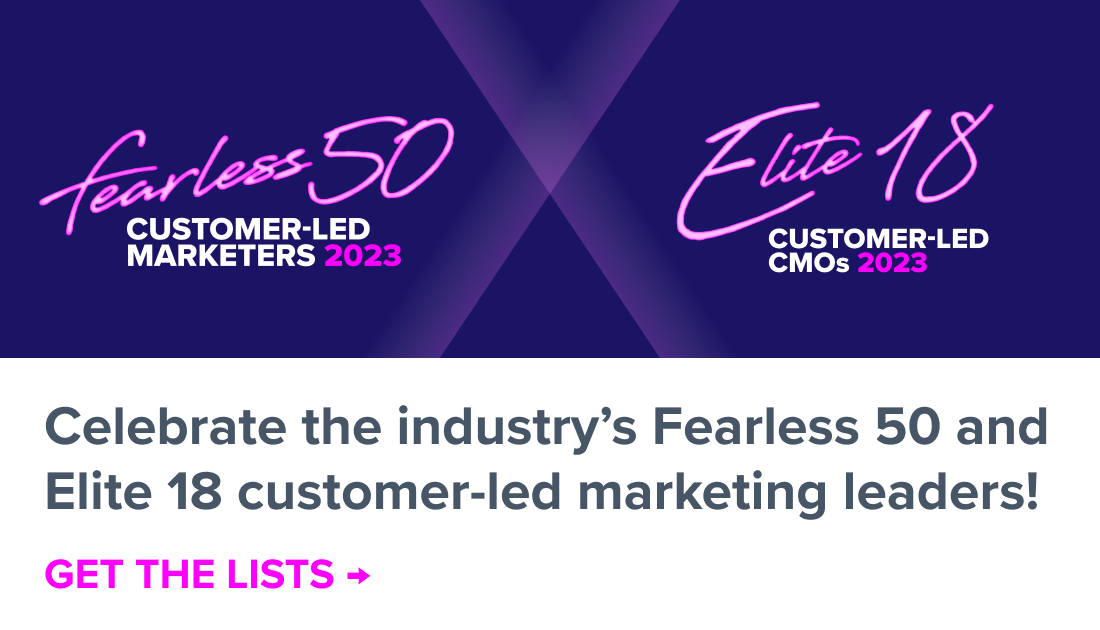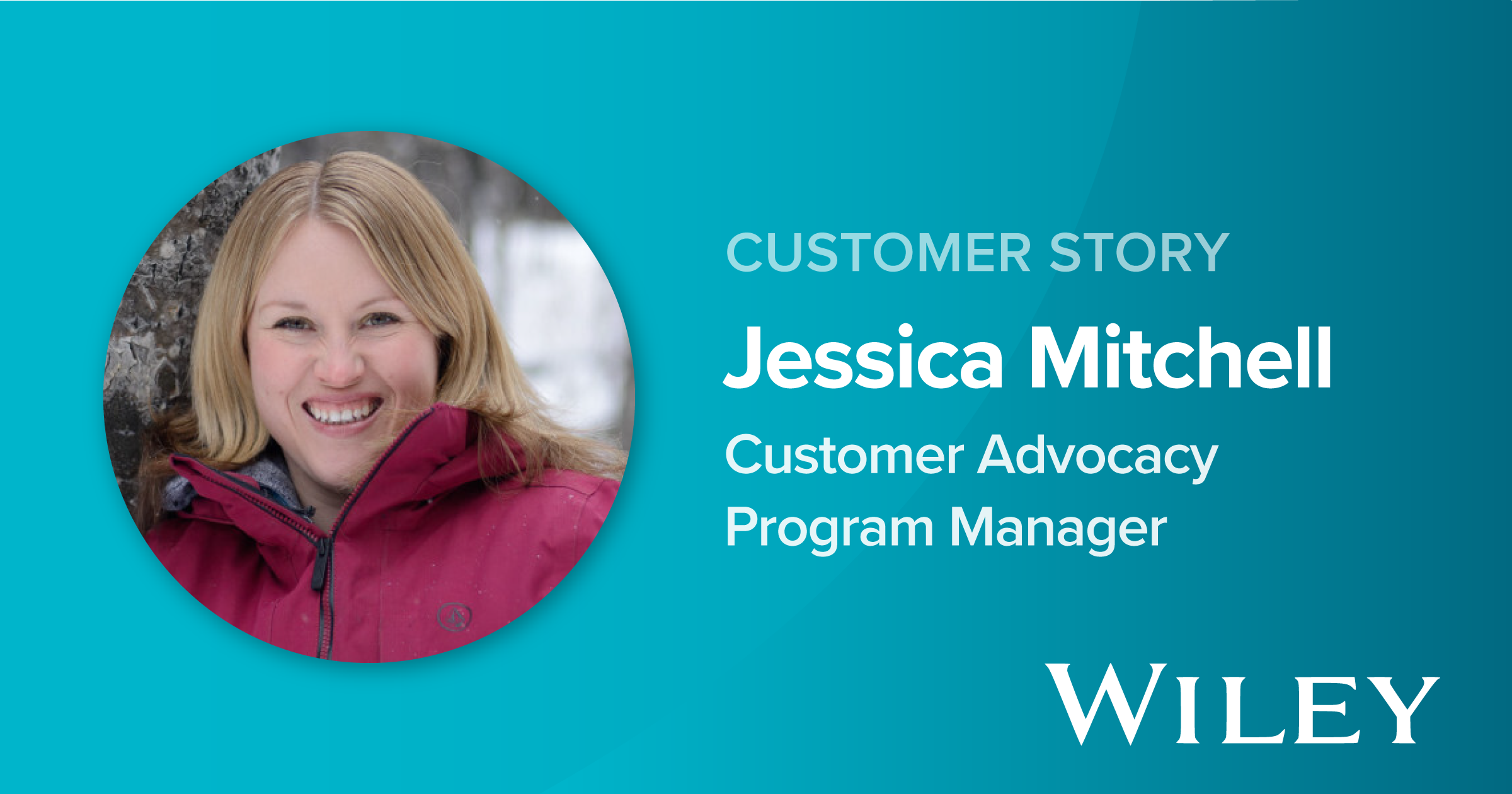
January 15, 2021
—
A customer advocacy manager has to walk a fine line. You want to reward your best customers and provide them with extraordinary value, but you also have certain asks to make of them to improve your business outcomes. The best and most efficient way to strike that balance is with an advocate community.
I first came across advocacy communities when working for a company called SMART Technologies, which makes education and business collaboration products. We needed a reference program, and I developed and launched a customer advocate-based strategy. Within six months of launching that program, we closed $100,000 in referral revenue, all because one of our advocates wanted to beat someone else on a leaderboard. I quickly learned how powerful advocate communities can be, which led me to lead the Customer Marketing and Advocate strategy when I moved on to SchoolMint. While there, I won a Best Advocate Marketing Award (BAMMIE) for Best Advocate Experience.
The best way to ensure the success of your customer advocate community is by listening to the needs of your community members.
At its best, advocate marketing is a two-way street that allows you to follow and enhance customer journeys, all the while harvesting valuable insights that will hone your brand presence and fine-tune your product offerings.
I joined Wiley, a global publishing company, a little over a year ago. Wiley has a 200-year history of helping people and organizations develop the skills they need to succeed. Our mission is to clear the way for seekers of knowledge, illuminating a path forward for education and research. I’m responsible for customer advocacy among higher education instructors using our digital products. I run two virtual customer communities that fuel a range of other initiatives.
Rather than having to set up an entirely new customer advocate program, I was lucky enough to inherit an established, active community. Wiley already had the technology, the strategy to back it up, a strong team, and a ton of advocates. When I first joined Wiley, my focus was on keeping the engine going, and maximizing the platform by building out our referral, review and reference strategy. Then COVID hit and changed everything.
Changing Our Needs to Match Those of Our Advocates
For three years, Wiley had executed its advocacy strategy using Influitive, the same platform I used to launch my programs at SMART Technologies and SchoolMint. Through Influitive’s use of gamification, targeting, and personalization, we nurtured our customers, providing them with rewards, educational content, and the opportunity to connect with others. We worked hard to make sure we struck the right balance of give and take, providing ROI and value to the business in tandem with adding value to our customers.
I liken it to that friend who always asks for help moving, but never shows any appreciation at the end of the day. As the asks continue, you’re much less likely to help. Compare that to the friend who rewards you with food and drink after a hard day’s work. It’s such a small, simple gesture, but you’d probably be more eager to help them again. It is important to take the same approach with customer advocates. Whether it’s educating them on a product, giving them a little perk like a coffee gift card, or providing them with “insider” status, showing them appreciation makes all the difference in the relationship.
We have three hubs, including the WileyPLUS Studio, the Knerd Studio, and the Student Studio. I manage our instructor hubs (the WileyPLUS Studio & the Knerd Studio). We utilize these communities to connect with our instructors and create advocate-fueled initiatives. Within our communities, we have a sub-community called the product advisory committee. That committee consists of about 380 advocates committed to helping improve our products. The Wiley Product Management team often taps into that community to get crucial feedback on features under development. Without Influitive, we’d certainly need more human resources to manage this committee, not to mention that everything would be scattered across email and Excel.
It would also take a lot longer. The product team will often ask for a certain number of respondents to a customer survey within a certain period of time. With Influitive, it’s as simple as setting up the survey within a challenge (an activity that earns members points once completed), and if people aren’t responding, we can give them a gentle nudge. I can have feedback within minutes or hours, and that saves a tremendous amount of time compared to emailing customers individually.
The ability to talk to one another is huge for instructors. That sense of true community is a reward in itself for them.
Our hubs are also a huge source of community connection. The ability to talk to one another and collaborate about what’s going on in their classrooms is paramount for our instructors. That sense of community is often a reward in itself, but it had an even bigger benefit when their world changed in 2020.
Building Community in a Year Full of Challenges
Our advocates are educators who were suddenly under immense pressure to pivot from an in-person learning model to an online/distance learning model. Given the circumstances, it felt wrong to make big asks of our advocates. We realized that under these extraordinary circumstances, we had to pivot, too. For the immediate future, we would have to find a new balance, one more heavily focused on supporting our advocates.
This year we launched our Peer Advisor Program. Distance learning is not just a matter of understanding the technology—it’s an entirely different teaching model. Some of our educators had to make that switch literally overnight. We wondered if we could connect some of our instructors experienced in online teaching with those new to the modality. We put out the call and, sure enough, 75 instructors agreed to mentor others who wanted help. The response has been overwhelmingly positive.
For all the advice and problem solving that happens in the hubs, they’re also a place for educators to vent their frustrations, especially this year. Advocates use the community to share problems as well as successes, such as navigating new platforms and creative ways to connect with students.
We’ve also found ways to create content based on their experiences. We launched a channel to lighten the mood and alleviate some of their ongoing stress. That channel can take several forms, from passing along self-care tips to Midweek Motivational and Favourite Friday challenges, to one of my favourites: “Spread joy, not germs: tell your fellow advocates something positive that happened in 2020.”
Over the summer we hosted a virtual event, “Wiley’s Wicked Summer Camp for Online Teaching,” which used the hub as a complementary discussion tool. We had a lot of fun with the camp theme, treating the forum like a virtual campfire. We were successful in using the forum to educate and nurture our instructors.
As an Inside Higher Ed article recently explored, professors miss the sense of community they used to enjoy in person on campus. I set up a discussion challenge in the hub with a link to that article, and asked our instructors directly: Has the Studio provided you with a sense of community during this tough time? It was great to hear that almost all of them said yes.
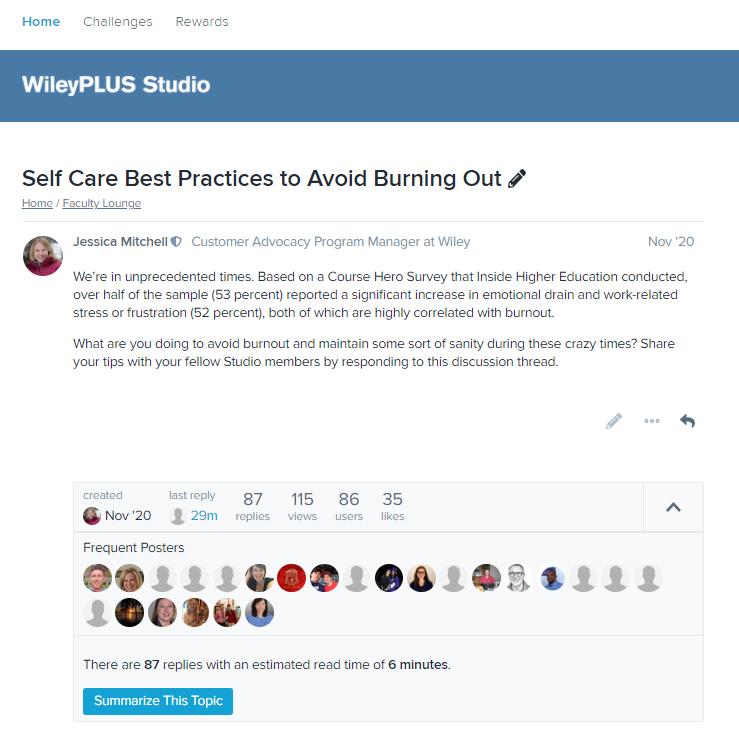
The Metrics and Mindsets of a Successful Community Hub
This year, we changed our advocate strategy in response to the pandemic, but our metrics still tell a story of success. Our peer advisors have influenced more than $400,000 in revenue. We’ve seen a 23% increase year over year in product adoptions. We launched a review campaign program in early 2020 that grew our reviews from zero to 73 in less than six months. Reviews are important to this business, and even though we didn’t want to ask more of our advocates as they were busy dealing with the pandemic, we’ll renew that program when the time is right.
Meanwhile, our product advisory community grew by 32 people. Those advocates have supported 24 product development projects with over 1,800 pieces of feedback. We estimate we have saved $36,000 this year alone by being able to solicit this feedback through our Influitive hub rather than having to outsource. Overall, our two hubs grew by 58% (the Knerd Studio) and 29% (the WileyPLUS Studio).
Running a successful advocate community requires more than creativity. Managers have to be personable and active in the community themselves.
Running a successful advocate community requires more than creativity. Managers have to be personable and active in the community themselves. Humans are all about connections, and when advocates can relate to a person behind the activities in the hub, they’re more likely to engage. When I share my aspirations and frustrations, they respond in kind.
You also need to put yourself in your advocate’s shoes and empathize with their struggles. Tailoring your message accordingly and responding quickly as their needs change will keep them active in the community.
Most importantly, be willing to listen to both internal and external customers. Ask yourself: What does success look like to them, and how can you enable that success through the hub?
Building an Advocate Culture
As customer advocate marketers, we tend to focus on external customers and forget that our colleagues are customers of the hub, too. It can be an uphill battle to get colleagues enthusiastic about the community. An easy way to start is to seize any opportunity to educate various teams on how they can use the hub to achieve their business goals.
When a team member has success with help from the hub, share that success and build on it, creating an internal advocate. I know I can sound like a broken record when I talk about the benefits of customer advocacy and how Influitive helps us grow our advocate base. When I enlisted the help of our top salesperson, however, the message became much more powerful. He now loves to talk about how our hub helped him reach sales targets and he can explain to his team how happy customers help him get new customers.
I also sit in on meetings to offer suggestions of ways people might not have considered using our advocates. As with anything else in marketing, you have to wear different hats. A product team member is going to see advocacy differently than a salesperson. You just have to change the message to suit your audience.
As we continue to support our educators through such a tough time, I look forward to using more of Influitive’s reporting capabilities to see what’s working, what’s not working, and tweak accordingly. We also recently integrated our hub with Salesforce and launched our Advocacy Insights dashboard. Insights are broken down by region and my sales and success colleagues will be able to see where we have strong advocates, thus increasing internal buy in even more.
One of the best things about customer advocacy is seeing small actions deepen the relationship between a company and its customers. By giving our advocates a place to network, get perks, learn, and share experiences, we not only provide value but get closer to them over time.
—
Want authentic customer stories like this for your company? Learn more about Influitive’s Upshot service.








